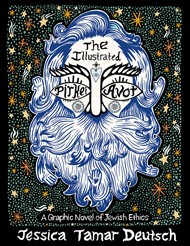One of the three teachings of Rabbi Eliezer ben Hyrcanus in Avot 2:15 runs as follows:Warm yourself by the fire of the sages, but be beware in case you get burned by its embers; for their bite is the bite of a fox, their sting is the sting of a scorpion, their hiss is the hiss a snake, and all their words are like fiery coals.
This is a curious mishnah because of its change of metaphor. If the words of the chachamim ("sages") are like fiery coals, the fire metaphor could have been sustained through a three-fold reference to pain that fire can generate: being burned, scorched or scalded. Instead, Rabbi Eliezer opts for metaphors from the animal kingdom. Why might he have done this?
The three creatures chosen by Rabbi Eliezer – the fox, the scorpion and the snake – are not exclusive to this mishnah: they also populate the books of the Jewish Bible as well as the oral traditions recorded in the Mishnah, Talmud and Midrash. Apart from the fact that the addressees of this teaching 2,000 years ago would have been considerably more familiar with them than we are today, the fox, scorpion and snake are redolent with symbolic significance. It is possible therefore that Rabbi Eliezer’s decision to select them for this mishnah is based on metaphorical or symbolic considerations.
If this is so, what might those considerations be, bearing in mind that snakes and scorpions are sometimes bracketed together (see e.g. Avot 5:7; Rashi at Bereshit 37:24 citing Bereshit Rabbah) while the author of this mishnah clearly distinguishes between them in terms of their threat to the person who is not wary of the words of the sages?
One possible explanation is that the choice contrasts the respective symbolic responses of the fox, scorpion and snake. The fox represents a crafty and resourceful mind. While we are cautioned about foxes elsewhere in Avot (“Be a tail to lions rather than a head to foxes”: Avot 4:20), they are favourably portrayed in the Talmud (Rashi to Sanhedrin 39a). The bite of the fox here may thus be taken as an allusion to the mental agility of the Torah scholar who, when arguing with others, baits his trap, waits for his adversary to fall straight into it – and then bites.
In contrast with the cunning of the fox, whose position is carefully thought out with a view to getting the better of an opponent, the sting of the scorpion is a spontaneous reflex action, something that is so deeply ingrained in its nature that the urge to use it cannot be resisted. This sting is in the tail – you just don’t see it coming. In this mishnah we can imagine this to be the sharp response or penetrating repartee that we recognize in the unanswerable put-down or “one-liner” that leaves its recipient literally speechless, a verbal knock-out blow that may be out of the speaker’s mouth almost before he even realizes that he is saying it.
This leaves us with the snake. Bible readers will need no reminder that this is the creature which the Torah describes as “more cunning than any of the beasts of the field” (Bereshit 3:1), whose seductive arguments led to the Fall of Man. The punishment of the snake included the loss of its legs (Bereshit 3:14) but, notably, not to the loss of its cunning. In the context of this mishnah we can learn that one should not take liberties with the chachamim: with their carefully-chosen words they will get the better of you even if it first seems that, in pressing their case, they “don’t have a leg to stand on".
Incidentally, the “cunning” snake in Bereshit is termed in Hebrew a nachash, essentially a hissing snake, while this mishnah refers to a saraf, a snake which ‘burns’ with its venom. The nachash may however also be venomous, as is implicit from Avot 5:7, and a reference to a chacham as being a nachash might be taken disparagingly, as suggesting that what is assumed to be his Torah learning is in fact no more than his cunning. To call a chacham a saraf does not import the same implication.











